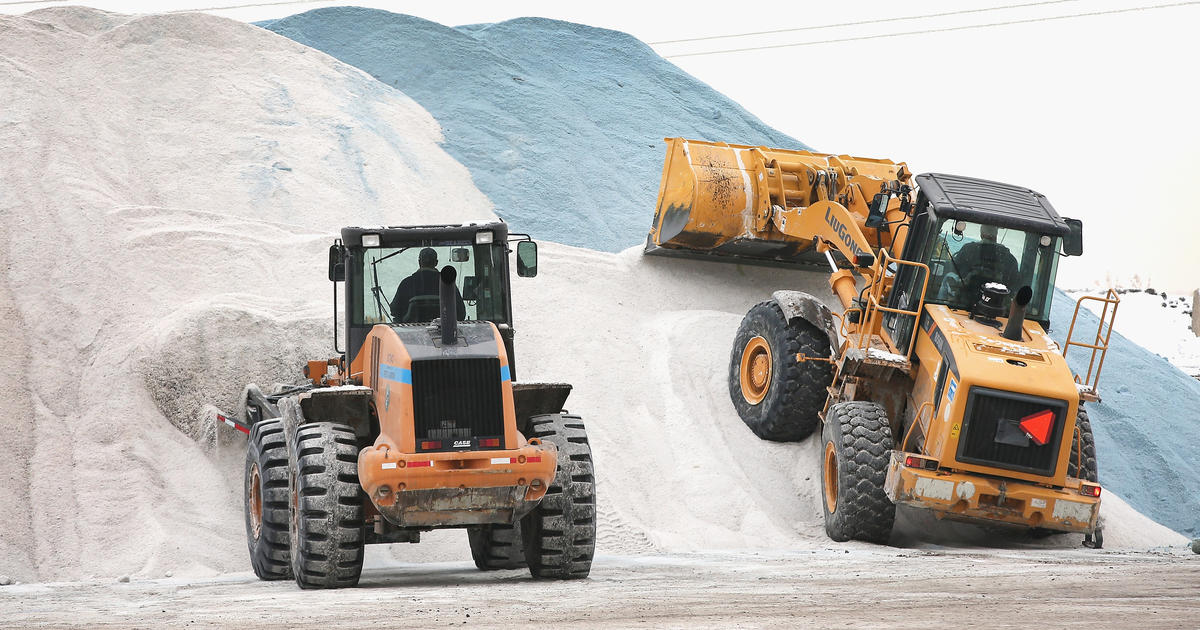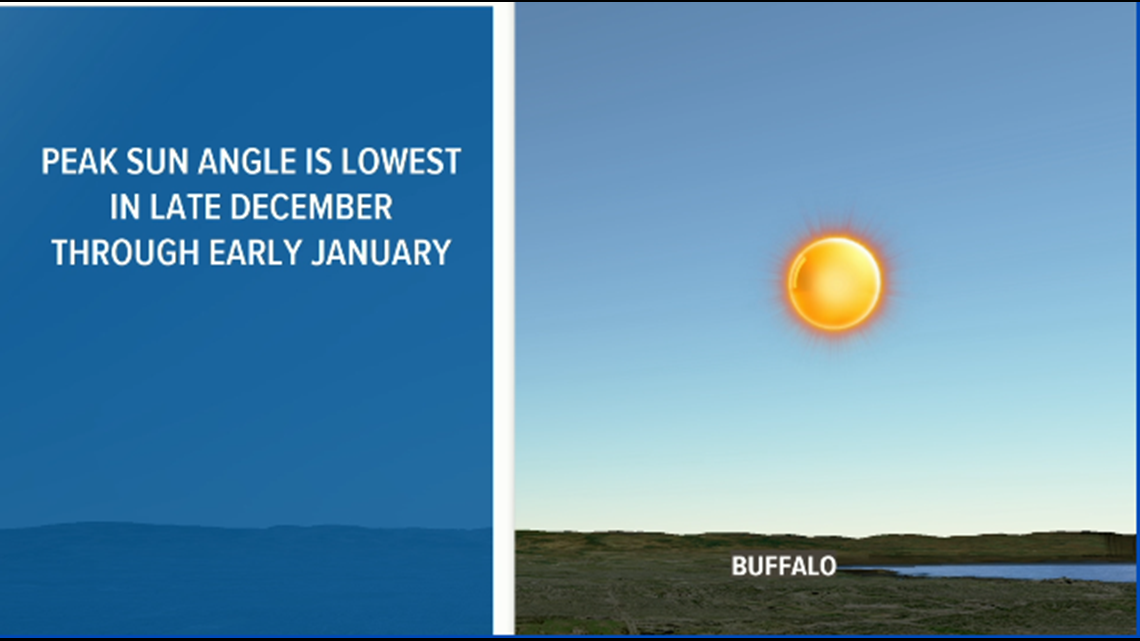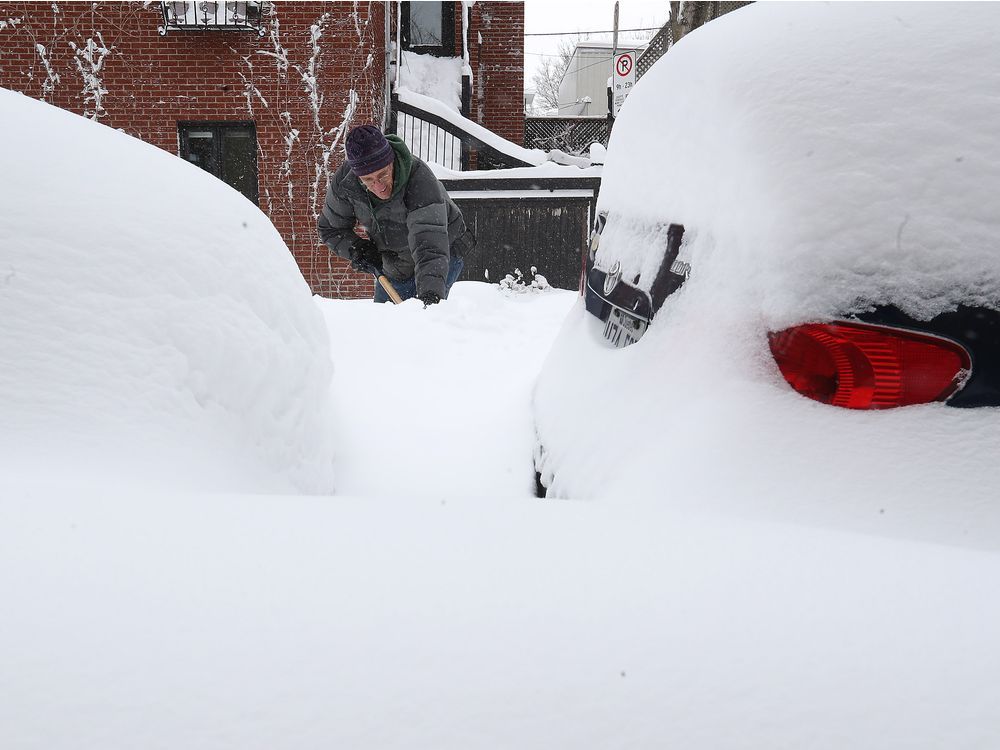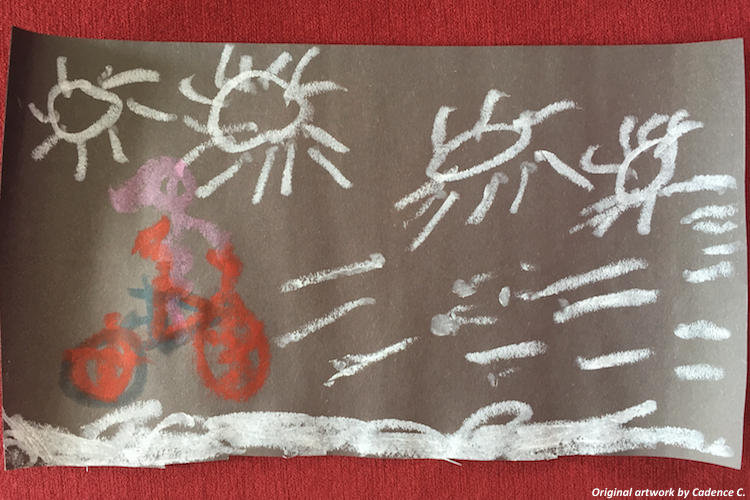You are looking for information, articles, knowledge about the topic nail salons open on sunday near me how fast does snow melt at 50 degrees on Google, you do not find the information you need! Here are the best content compiled and compiled by the https://chewathai27.com team, along with other related topics such as: how fast does snow melt at 50 degrees how fast does snow melt at 45 degrees, how fast does rain melt snow, how fast will snow melt at 60 degrees, how fast does snow melt at 30 degrees, how fast does snow melt at 35 degrees, how fast does ice melt at 40 degrees, snow melt calculator, how long does it take for 6 inches of snow to melt
Three days of temperatures at 50 degrees can melt 2 to 4 inches of snow. If temps fall below freezing at night, the process will be slower. The amount of moisture in the air can accelerate the melting process, while wind will carry away the moisture and preserve the snow pack.Temperatures need to be above 32 degrees to kickstart the melting process. This doesn’t mean once temperatures jump above 32 snow immediately starts to melt, it takes time. This is a topic we will cover later in this blog. Wind is important, because winds transport heat throughout our atmosphere.It turns out that you don’t need temperatures below freezing for snow to fall. In fact, snow can fall at temperatures as high as 50 degrees. Most residents of the northern United States have probably seen 40-degree snowfalls before, but snow at temperatures greater than 45 degrees is hard to come by.
Contents
Will snow melt at 52 degrees?
Temperatures need to be above 32 degrees to kickstart the melting process. This doesn’t mean once temperatures jump above 32 snow immediately starts to melt, it takes time. This is a topic we will cover later in this blog. Wind is important, because winds transport heat throughout our atmosphere.
Will snow melt at 45 degrees?
It turns out that you don’t need temperatures below freezing for snow to fall. In fact, snow can fall at temperatures as high as 50 degrees. Most residents of the northern United States have probably seen 40-degree snowfalls before, but snow at temperatures greater than 45 degrees is hard to come by.
What temperature does snow melt fast?
If the thermometer reads higher than 32 degrees, snow is going to melt day or night. The warmer the air is, the faster the snow melts. No kidding.
How long does it take for snow to melt at 10 degrees?
Back to video. CBS Chicago asked their meteorologist that burning question a few years ago and he gave them a great little formula that, translated to metric, goes something like: Three days at 10 degrees Celsius would melt 5 to 12 centimetres of snow.
Will 50 degrees melt snow?
Three days of temperatures at 50 degrees can melt 2 to 4 inches of snow. If temps fall below freezing at night, the process will be slower. The amount of moisture in the air can accelerate the melting process, while wind will carry away the moisture and preserve the snow pack.
How long does it take for 1 inch of snow to melt?
Every day is different, but as a rule of thumb, in 40-degree weather we lose half an inch of snow per day. 50-degree weather melts 2 to 4 inches a day!
Can it sleet at 50 degrees?
Sleet and snow can still occur in situations in which the surface air temperature is above 45 F when the air aloft cools very rapidly with height but this situation is not common and the precipitation will melt very quickly once it reaches the ground surface.
What temperature is too cold for snow to fall?
This cooling retards melting. As a general rule, though, snow will not form if the ground temperature is at least 5 degrees Celsius (41 degrees Fahrenheit).
Will snow melt if the sun is out?
As the sun emerges in the morning it’s energy warms the air causing the temperature to rise. Even when the temperature of the air doesn’t reach 32° the sun can still warm the ground, snow, dirt, homes, etc. to 32°. When that happens the snow or ice will still melt even if the air temperature doesn’t reach freezing.
Will snow melt at 30 degrees?
What Temperature Does Snow Melt? Snow is a piece of fancy-looking ice that drops in small pieces but accumulates into a larger form when it settles. Water changes states at 0°C or 32°F, and ice is the solid state of water. The snow will melt above 32° or freeze below 32° as a result of this.
Does wet snow melt faster?
as heavy, “wet” snow that has more liquid water in it. temperatures drop well below freezing. and therefore melt faster.
How long does it take ice to melt?
Every ice melt has a unique property that helps it to perform under different weather conditions. While some may work best within 20 mins, others may take around 45 mins to melt ice.
Does ice melt at 32 degrees?
The melting point at which ice — a solid — turns to water — a liquid — is 32°F (0°C).
Is black ice black?
Black ice, sometimes called clear ice, is a thin coating of glaze ice on a surface, especially on roads. The ice itself is not black, but visually transparent, allowing the often black road below to be seen through it.
Will ice melt 33 degrees?
I picked 33 degrees because that usually starts decent melting. The 33 degree line will gradually move north overnight. Anywhere south of the 33 degree line should be in the mid 30s at coldest, and should have quick melting of ice.
Can it sleet at 50 degrees?
Sleet and snow can still occur in situations in which the surface air temperature is above 45 F when the air aloft cools very rapidly with height but this situation is not common and the precipitation will melt very quickly once it reaches the ground surface.
Can it snow at 57 degrees?
In order for a snowflake to form, the temp must be 32F or lower. No exceptions. That flake then falls. Usually a few thousand feet or more, from the cloud that “birthed” it.
Can snow melt in?
There are two ways snow can disappear in subfreezing temperatures. First, the most common way is when the sun heats the ground to above freezing. This allows ice and snow to melt even though air temperatures may be below freezing. The darker the surface, like asphalt or roof tops, the warmer it can get.
Will snow stick at 35 degrees?
It is safe to say that snow will stick to the ground when the air temperature is 32 (degrees) or lower, but other factors such as the state of the ground and intensity of the snowfall come into play when temperatures are in the middle or upper 30s.
Warming On Way: How Much Snow Will Melt? – CBS Chicago
- Article author: www.cbsnews.com
- Reviews from users: 1555
Ratings
- Top rated: 3.8
- Lowest rated: 1
- Summary of article content: Articles about
Warming On Way: How Much Snow Will Melt? – CBS Chicago Updating … - Most searched keywords: Whether you are looking for
Warming On Way: How Much Snow Will Melt? – CBS Chicago Updating Looking ahead to next week, Chicago will get a welcome relief with temperatures expected above freezing for several days in a row.Snow Storm - Table of Contents:

How long will the snow stick around?
- Article author: www.abc57.com
- Reviews from users: 16715
Ratings
- Top rated: 3.2
- Lowest rated: 1
- Summary of article content: Articles about How long will the snow stick around? Updating …
- Most searched keywords: Whether you are looking for How long will the snow stick around? Updating ABC57 News in South Bend, Ind. covers all of Michiana including St. Joseph, Elkhart, Kosciusko, LaPorte and Marshall counties in Indiana and Berrien, Cass, Van Buren and St. Joseph counties in Mich.Michiana, South Bend News, Mishawaka News, Berrien County News, Dowagiac News, La Porte News, La Grange News, Warsaw News, Plymouth News, Sturgis News, Buchanan News, Niles News, Elkhart News, Goshen News, ABC 57, ABC 57 Weather, Michiana Weather, Notre Dame Sports, South Bend Cubs, Notre Dame News.
- Table of Contents:
Top Stories
Latest
Trending
ABC57 Investigates

How it can snow above 40 degrees – The Washington Post
- Article author: www.washingtonpost.com
- Reviews from users: 48683
Ratings
- Top rated: 3.2
- Lowest rated: 1
- Summary of article content: Articles about How it can snow above 40 degrees – The Washington Post Updating …
- Most searched keywords: Whether you are looking for How it can snow above 40 degrees – The Washington Post Updating Snow has been known to fall with temperatures near the ground above 40 or even 45 degrees.
- Table of Contents:

Heather’s Weather Whys: Factors in a fast meltdown | wgrz.com
- Article author: www.wgrz.com
- Reviews from users: 23701
Ratings
- Top rated: 3.4
- Lowest rated: 1
- Summary of article content: Articles about Heather’s Weather Whys: Factors in a fast meltdown | wgrz.com Updating …
- Most searched keywords: Whether you are looking for Heather’s Weather Whys: Factors in a fast meltdown | wgrz.com Updating Warm air and sunlight can shrivel a snowpack pretty quickly, but other weather factors can speed up the melting process too.
- Table of Contents:
Navigation
Related Articles
WGRZ would like to send you push notifications about the latest news and weather

How long does it take snow to melt? | Montreal Gazette
- Article author: montrealgazette.com
- Reviews from users: 2852
Ratings
- Top rated: 5.0
- Lowest rated: 1
- Summary of article content: Articles about How long does it take snow to melt? | Montreal Gazette Updating …
- Most searched keywords: Whether you are looking for How long does it take snow to melt? | Montreal Gazette Updating During this week’s big snowstorm, and the snow that fell more reasonably next day, accumulation in Montreal was about 40 centimetres.
- Table of Contents:
Share this Story How long does it take snow to melt
Advertisement 1
Share this Story How long does it take snow to melt
Breadcrumb Trail Links
Article content
Advertisement 2
Article content
Share this article in your social network
Share this Story How long does it take snow to melt
Latest National Stories
Advertisement 1
Montreal Gazette Headline News
Trending
This Week in Flyers
Categories
Follow Montreal Gazette
Secondary Links
Notice for the Postmedia Network

how fast does snow melt at 50 degrees
- Article author: www.quora.com
- Reviews from users: 29690
Ratings
- Top rated: 4.0
- Lowest rated: 1
- Summary of article content: Articles about how fast does snow melt at 50 degrees Snow won’t melt at –2° but it will sublime, that is go directly from the sol to water vapor without melting. How fast it does sublime depends on the … …
- Most searched keywords: Whether you are looking for how fast does snow melt at 50 degrees Snow won’t melt at –2° but it will sublime, that is go directly from the sol to water vapor without melting. How fast it does sublime depends on the …
- Table of Contents:

How Long Will the Snow Stick? – Bedtime Math
- Article author: bedtimemath.org
- Reviews from users: 43793
Ratings
- Top rated: 3.8
- Lowest rated: 1
- Summary of article content: Articles about How Long Will the Snow Stick? – Bedtime Math 50-degree weather melts 2 to 4 inches a day! Let’s hope it stays cold for our sledding and snowmen. Wee ones: A snowflake has 6 ses. Can you … …
- Most searched keywords: Whether you are looking for How Long Will the Snow Stick? – Bedtime Math 50-degree weather melts 2 to 4 inches a day! Let’s hope it stays cold for our sledding and snowmen. Wee ones: A snowflake has 6 ses. Can you …
- Table of Contents:

Will snow melt at 50 degrees?
- Article author: faq-ans.com
- Reviews from users: 39600
Ratings
- Top rated: 4.3
- Lowest rated: 1
- Summary of article content: Articles about Will snow melt at 50 degrees? Three days of temperatures at 50 degrees can melt 2 to 4 inches of snow . …
- Most searched keywords: Whether you are looking for Will snow melt at 50 degrees? Three days of temperatures at 50 degrees can melt 2 to 4 inches of snow . Will snow melt at 50 degrees? Three days of temperatures at 50 degrees can melt 2 to 4 inches of snow . If temps fall below freezing at night, the process will be slower. The amount of moisture in the air can accelerate the melting process, while wind will carry away the moisture and prese…
- Table of Contents:

Faster snow melt?? 50 and rain or 80 and sunny? (warm, temperature, 2013) – Weather -Temperature, sun, sunlight, rain, hurricanes, tornadoes, climate, forecasts, humidity, heat, snow… – City-Data Forum
- Article author: www.city-data.com
- Reviews from users: 29021
Ratings
- Top rated: 3.0
- Lowest rated: 1
- Summary of article content: Articles about Faster snow melt?? 50 and rain or 80 and sunny? (warm, temperature, 2013) – Weather -Temperature, sun, sunlight, rain, hurricanes, tornadoes, climate, forecasts, humidity, heat, snow… – City-Data Forum Maybe a hard question to answer, but would snow melt faster with 50 degrees with 1” of rain over a 24 hr period (completely overcast of … …
- Most searched keywords: Whether you are looking for Faster snow melt?? 50 and rain or 80 and sunny? (warm, temperature, 2013) – Weather -Temperature, sun, sunlight, rain, hurricanes, tornadoes, climate, forecasts, humidity, heat, snow… – City-Data Forum Maybe a hard question to answer, but would snow melt faster with 50 degrees with 1” of rain over a 24 hr period (completely overcast of … Faster,snow,melt,50,rain,80,sunny,warm,temperature,2013, Faster snow melt?? 50 and rain or 80 and sunny?, cities,forumMaybe a hard question to answer, but would snow melt faster with 50 degrees with 1” of rain over a 24 hr period (completely overcast of course if
- Table of Contents:

CadenfersMarquez
- Article author: cadenfersmarquez.blogspot.com
- Reviews from users: 18044
Ratings
- Top rated: 4.0
- Lowest rated: 1
- Summary of article content: Articles about CadenfersMarquez At 40 degrees Fahrenheit snow would not melt very fast. . It wont help much. The more intense the sunlight the faster it melts. The other way compares the … …
- Most searched keywords: Whether you are looking for CadenfersMarquez At 40 degrees Fahrenheit snow would not melt very fast. . It wont help much. The more intense the sunlight the faster it melts. The other way compares the …
- Table of Contents:

How Fast Does Snow Melt at 50 Degrees – Annabelle-oBenson
- Article author: annabelle-obenson.blogspot.com
- Reviews from users: 44032
Ratings
- Top rated: 4.2
- Lowest rated: 1
- Summary of article content: Articles about How Fast Does Snow Melt at 50 Degrees – Annabelle-oBenson How Fast Does Snow Melt at 50 Degrees … The amount of moisture in the air can accelerate the melting process while wind will ca. It wont help much. Weather Whys … …
- Most searched keywords: Whether you are looking for How Fast Does Snow Melt at 50 Degrees – Annabelle-oBenson How Fast Does Snow Melt at 50 Degrees … The amount of moisture in the air can accelerate the melting process while wind will ca. It wont help much. Weather Whys … How Fast Does Snow Melt at 50 Degrees
- Table of Contents:
IKLAN
Iklan Atas Artikel
Iklan Tengah Artikel 1
Iklan Tengah Artikel 2
Iklan Bawah Artikel
Footer
PENCARIAN
Cari Blog Ini
Tayangan halaman minggu lalu
Arsip Blog
Postingan Populer
Arsip Blog
Labels
At What Temp Does Snow Melt – Micro B Life
- Article author: www.microblife.in
- Reviews from users: 39734
Ratings
- Top rated: 4.2
- Lowest rated: 1
- Summary of article content: Articles about At What Temp Does Snow Melt – Micro B Life How long does it take for snow to melt? … Three days of temperatures at 50 degrees can melt 2 to 4 inches of snow. If temps fall below freezing … …
- Most searched keywords: Whether you are looking for At What Temp Does Snow Melt – Micro B Life How long does it take for snow to melt? … Three days of temperatures at 50 degrees can melt 2 to 4 inches of snow. If temps fall below freezing …
- Table of Contents:
At What Temp Does Snow Melt
How long does it take for snow to melt
Can snow melt under 32 degrees
Does snow melt at 0 degrees
Does snow melt at night
Does it get colder when snow melts
Will snow melt at 28 degrees
Why is snow melting below freezing
What temp is too cold to snow
Does the sun melt snow
Can it snow at 40 degrees
Does snow melt in rain
What weather melts snow the fastest
Where do snow go when it melts
Why does it feel warmer when it snows
What is melting snow called
What temperature does ice form
What outdoor temperature melts snow
How much snow can melt in a day
How cold does it have to be to freeze to death
What is the coldest place on Earth
Does Texas have snow
Can the sun melt a diamond
What can the sun not melt
Does water melt ice
What is snow made of
At what elevation is there always snow
Does wind help snow melt
Does snow melt Minecraft
Will freezing rain melt snow
How can I melt a lot of snow fast
At what degree does water freeze
Can snow evaporate without melting
When snow melts what does it become spring
At what temperature will snow melt
Shayne Ward – Melt The Snow (Official Audio)
[Kara-Vietsub] – Melt The Snow -Shayne WardDoes snow melt at 40 degrees
Recent Posts
Recent Comments

See more articles in the same category here: https://chewathai27.com/toplist.
Warming On Way: How Much Snow Will Melt?
By John Dodge
CHICAGO (CBS) — Looking ahead to next week, Chicagoans will get a welcome winter respite with temperatures expected above freezing for several days in a row.
Even a day or two near 50 degrees is possible.
That got us to wondering: How long will it take to melt all of this snow?
Not accounting for the huge piles that are in parking lots, driveways and, it seems, just about everywhere, the Chicago area has at least of foot of snow on the ground. Some areas have much more.
Just like deciding how many licks it takes to get to the center of a Tootsie Pop, the melting rate depends on a variety of factors, CBS 2 meteorologist Ed Curran says.
Three days of temperatures at 50 degrees can melt 2 to 4 inches of snow. If temps fall below freezing at night, the process will be slower.
The amount of moisture in the air can accelerate the melting process, while wind will carry away the moisture and preserve the snow pack.
Sun, of course, will melt snow faster, even on days when it’s below freezing.
And the color of the snow plays a role, too.
White snow reflects sunlight and melts slower, while dirty snow absorbs it and melts faster.
If snow melts too quickly, Chicago could see flooding.
There are up to four inches of water locked up with the snow pack. Plus, the ground is frozen between eight to 18 inches below the surface.
That means all that water won’t be absorbed into the ground, creating the potential for significant runoff.
Rain is possible next week as well, which would just add to the potential mess.
Other complicating factors are ice and snow blocking storm drains. Residents should go out this weekend and clear them.
Ice jams on rivers may impede the flow of water.
That can cause water to back up, including some spots that typically don’t get floods.
There is also the potential for home damage from melting ice and snow that can’t drain properly due to ice damming on roofs and in gutters.
“If it happens at a reasonable rate, the snow can melt, evaporate or runoff and the ice can break up nicely,” Curran said.
“Wednesday, Thursday and Friday of next week will be a key period to watch.”
How long will the snow stick around?
How long will the snow stick around?
We have seen several inches of snow here in Michiana over the past couple of weeks, and now with warmer temperatures in the forecast, people are wanting to know how long the snow will stick around. In order for us to make that determination we have to look at a few key factors that contribute to this process.
The first thing we look at is air temperature and wind. Temperatures need to be above 32 degrees to kickstart the melting process. This doesn’t mean once temperatures jump above 32 snow immediately starts to melt, it takes time. This is a topic we will cover later in this blog. Wind is important, because winds transport heat throughout our atmosphere. Here at the surface, if we have a few days with breezy winds, heat transports over our snow pack more efficiently, thus speeding the melting process.
Second, we look at two forms of radiation. The first form is shortwave radiation (solar radiation), which is produced by the sun. On days where skies are clear and there is no cloud cover we receive more solar radiation which helps melt more of our snow. Cloudy days do the opposite. The next form of radiation is longwave (earths radiation). The core of the earth is very warm, this warmth travels through the earth’s layers and is emitted at the surface. When there is lots of snow on the ground this radiation gets trapped. This is why air temperatures, especially during the night time, stay on the colder side when there is layer of snow on the ground. This then contributes to slowing the melting process.
Third, is the snow density. You hear us talk about wet snow vs dry snow with various systems that move through. Wet snow has more water content making it more dense, this means it needs more heat and energy to melt and then evaporate. Dry snow is less dense, therefore taking less time to melt and then evaporate.
Fourth, we reference the term albedo. You probably will never hear us throw this term out during our regular weather forecast, but it is important when talking about snow melt. Albedo is the measure of an objects reflectivity. The scale for albedo ranges from 0 to 100. Snow has a very high albedo at 99. What is the snow reflecting though? The snow reflects the shortwave radiation produced by the sun that we were just talking about. This naturally will hinder the melting process. This is also how you can catch a sun burn on a sunny winter day. If you are outside working or playing in the snow for a longer period of time, the suns radiation reflected off the snow will cause the sun burn to occur.
Last but not least is latent heat. Latent heat is the most important factor that determines how long snow will stick around. Latent heat is the measure of energy needed to change the state of matter. For example, changing a solid to a liquid and a liquid to a vapor. To better explain this process think of pulling an ice cube out of the freezer. In the freezer temperatures are below freezing and the ice cube is a solid, now you pull the ice cube out and put it on the counter in a room that is roughly 70 degrees. That ice cube stays a solid, it doesn’t immediately turn to a liquid, this is because it takes time for the cube to gain heat energy enough to turn to a liquid. This is the latent heat process. When there is snow outside and it’s 40 degrees the snow doesn’t immediately melt, just like the ice cube.
So as we look at all these factors and the weather conditions in the forecast, we will likely see most of the snow on the ground melt by mid to late next week.
Here’s why snow can fall when it’s well above freezing
Comment on this story Comment Gift Article Share
President Biden’s inauguration on Jan. 20 in Washington kicked off with a confetti of snowflakes, a dying snow squall slipping west of the Capitol building shortly before the midday swearing-in ceremony. Temperatures at the time were in the lower 40s, but that didn’t stop the flurry of flakes from swarming the skies.
It turns out that you don’t need temperatures below freezing for snow to fall. In fact, snow can fall at temperatures as high as 50 degrees.
Most residents of the northern United States have probably seen 40-degree snowfalls before, but snow at temperatures greater than 45 degrees is hard to come by.
Snow is a form of ice crystal, and, although it can fall through a layer of air that is above freezing, it does require temperatures below 32 degrees to form in the sky. It’s always below freezing somewhere in the atmosphere; in the summer, that level may be several miles above the ground, whereas freezing levels descend during winter.
When moisture overlaps with below-freezing temperatures at cloud level, snowflakes can form. It’s not uncommon for snowflakes and ice crystals to form aloft in tall thunderclouds even during July! Of course, they melt before hitting the ground.
Advertisement
In the winter, those snowflakes form closer to the surface, and they have a much easier time reaching the ground — especially when ground temperatures are at or below freezing.
But certain circumstances may allow them to survive their descent to the ground through pockets of air that are above 32 degrees. There are several factors that determine their odds of making it to the ground.
Because most snowflakes only fall at 3 to 5 mph, they have a long residence time surfing through the atmosphere before colliding with the ground. If air temperatures are a smidgen above freezing, gradual melting will take place. The warmer the ambient temperature, the more quickly the snowflake will melt.
But here’s where things get interesting. As the snowflake melts, the change of state from solid ice to liquid water requires an input of latent heat, or heat energy to support the phase change. That extra nudge of heat is sucked in from the surrounding environment and from the remainder of the snowflake itself. In other words, the actual process of melting cools the rest of the snowflake and the air around it.
Advertisement
It’s the same process that makes sweating work. After exercising, or spending more than 3.8 seconds outdoors in Florida, a layer of liquid sweat will be present around your body. As that evaporates, the change of state draws heat from your body, cooling you down.
In the case of snowflakes, much of that liquid water also evaporates into the surrounding air, cooling the snowflake even further. The drier the air, the more quickly said water evaporates.
That means that, under the right conditions, a snowflake can be in balance — melting at the exact rate that heat is sucked out of it by evaporative cooling. Assuming the snowflake falls quickly enough and is sufficiently large, the remaining chilled snowflake may be intact when it hits the ground.
In dry environments, that can happen at temperatures well into the 40s. It’s most common with snow squalls, which feature briefly heavy snowfall rates and plenty of snowflakes. They also form along the interface of opposing air masses, usually cold fronts, when temperatures quickly plummet.
Advertisement
Under the right — though rare — circumstances, snow could even fall at a temperature of 50 degrees. You would need an extremely dry, desert-like environment with single-digit relative humidity, with a moist air mass running over top of it.
Other types of frozen precipitation can occur at even higher temperatures. When it comes to sleet or graupel, or soft snow pellets rimed with ice, it’s much less challenging to bring them to the ground without melting. Because they have a lesser surface-area-to-volume ratio than snowflakes, there is less exposed surface for the air to eat away at, and the frigid core of the ice pellet has a better shot at surviving the descent.
So the next time it snows in your neck of the woods, check the thermometer. If it’s above freezing, you’ll understand how it’s happening.
GiftOutline Gift Article
So you have finished reading the how fast does snow melt at 50 degrees topic article, if you find this article useful, please share it. Thank you very much. See more: how fast does snow melt at 45 degrees, how fast does rain melt snow, how fast will snow melt at 60 degrees, how fast does snow melt at 30 degrees, how fast does snow melt at 35 degrees, how fast does ice melt at 40 degrees, snow melt calculator, how long does it take for 6 inches of snow to melt

